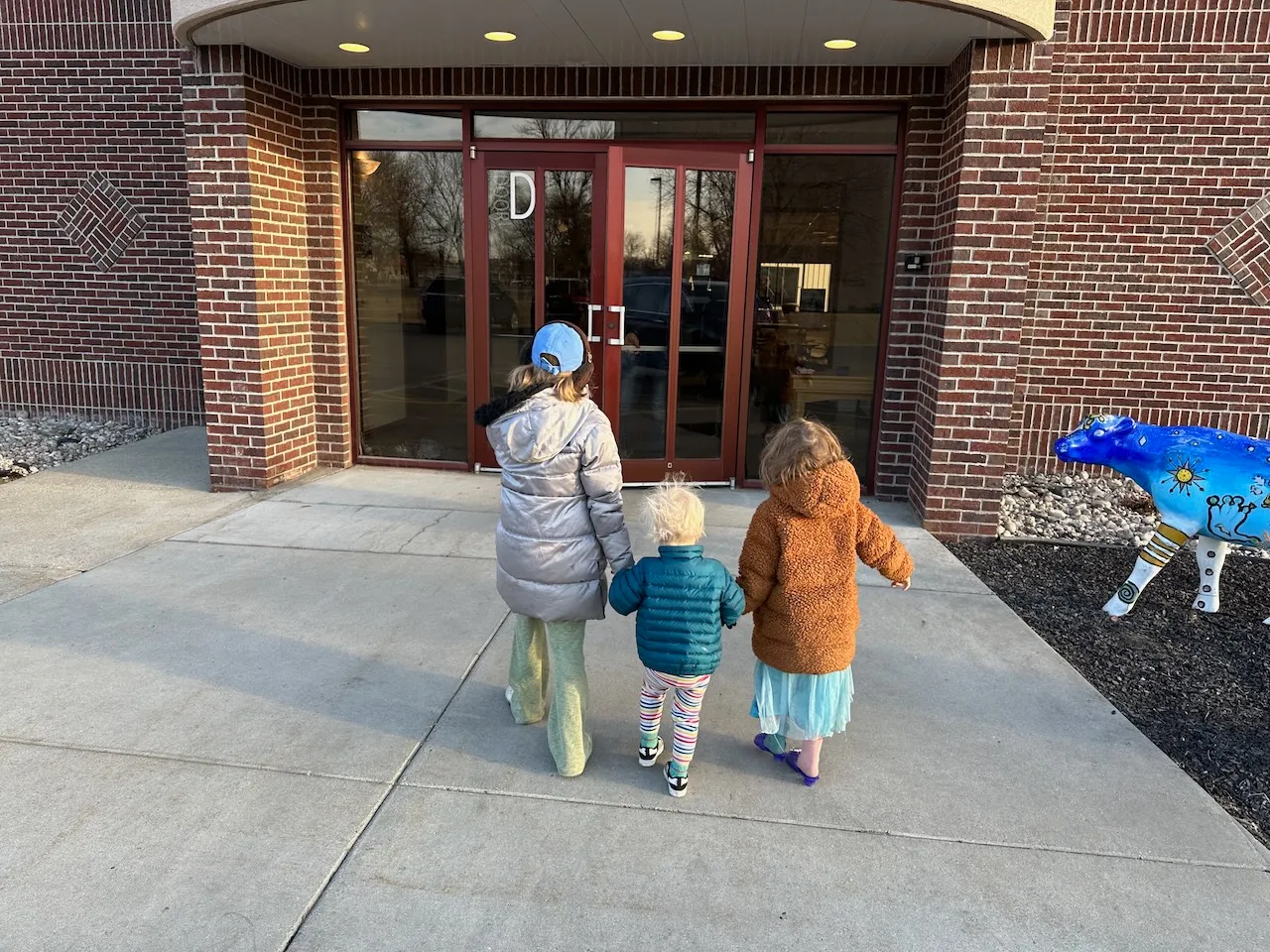It’s Time for Web3 to Build - Creating Real-World Impact with Web3
The impact of Web3 will truly be felt when we move from bits to atoms. By attracting talent and showing what is possible, web3 can move from digital world building to physical world changing. In short: it’s time for web3 to equitably build.

Table of Contents
You can listen to this article via the Ed3 Podcast. Subscribe here.
Web3 is reimagining financial systems, digital art, and how we work. The majority of the work has been focused on creating wealth through new, digital creations.
Which, makes sense.
Web3 - used here as a general term incorporating efforts to enable trustless coordination with blockchain technology - is focused on decentralization. The promise is the ability to connect and work with anyone, anywhere, any time. In this virtual metaverse, there are few rules (and fewer regulations). It’s the blue ocean where anything digital can be quickly created and launched, including entirely new countries.
It’s more straight-forward than the physical world. Seemingly boundless, with infinite possibility and little legacy baggage. The disconnect from the physical world, however, raises the question of the long-term impact, sustainability, and equity of these efforts. If web3 only helps digital natives, how helpful can it really be?
To increase access and opportunity, the web3 community faces a difficult task: creating change in the physical world for those who need it most.
Web3 has the potential to help lift people out of poverty, provide professional opportunities, educate over half of children who are not meeting math and reading standards, and more. However, to reach the majority of the people on the planet, web3 needs to move beyond the virtual. Web3 needs to be applied to real world problems.
As Kevin Ewocki notes: “When we articulate how [web3] is having a positive impact in the world, it creates legitimacy…It’s not just decentralized casinos anymore. We’ll have actual proven examples of creating systems that solve for everyday human problems.”

Time is of the essence.
Web3 has the potential to build a better internet and better human systems. Industries like education can be reimagined in an equitable and impactful way. But, there is a window of time to create these massive changes. If someone’s only exposure to web3 is a scam or negative news headlines, they’ll be less likely to consider these new possibilities. If we wait too long or move too slow, the opportunity for reinvention may pass.
Now is the key moment to bring the ethos, technology and ambition of web3 to the real world to solve human problems.
In short: it’s time for web3 to equitably build.

It’s Time to Equitably Build
It’s easier to move bits than atoms.
As Internet companies have shown, we can quickly create new tools in the fast-moving world of bits. These digital solutions, if built responsibly, improve the quality of life for those that can access them. The newest app or platform is quickly adopted by people who spend their time online because digital solutions make their digital lives better.
It gets harder with atoms.
When the digital meets the physical, things slow down. Challenges from existing regulations, physical infrastructure, geography, legacy institutions, and more make physical change hard. What’s more, those who benefit most from changes in the world of atoms are people who live their lives offline. These communities are often harder to reach with less disposable income.
To truly transform our physical communities, we have to do the hard work of building with bits and atoms. This is building equitably.
Marc Andressen noted as much in his seminal essay, It’s Time to Build. He highlighted that in the early stages of the COVID pandemic:
Every Western institution was unprepared for the coronavirus pandemic, despite many prior warnings...Part of the problem is clearly foresight, a failure of imagination. But the other part of the problem is what we didn’t do in advance, and what we’re failing to do now. And that is a failure of action, and specifically our widespread inability to build.
It’s not for lack of knowledge - we know how to build things - rather, it’s lack of will.
It’s hard to build in the physical world.
Why mess around with the sticky challenges in the physical world for less potential financial rewards when it’s possible to create new financial systems and platforms that immediately launch to a wealthy global audience? The incentives just aren’t there.
This is where web3 can step in and truly make an impact in the world. Web3 creates choice. For those facing hardship due to war, climate change, poor financial systems, or corrupt political systems, it offers a blueprint to begin to control one’s destiny.
What’s more, by empowering individuals, web3 has the potential to enable entire communities or countries to leapfrog the traditional stages of development and position themselves for the jobs and the work of the future.
To bring these aspirational promises to life, web3 needs to get physical. Web3 needs to equitably build.

Ed3 Primitives and Solutions
In recent weeks, the crypto market has crashed dramatically. In this new bear market, interest may wane from those looking for a quick buck. Those left will be the builders, looking to use the technology to create real change.
This is the perfect time to equitably build and help those online and offline.
Fortunately, numerous projects are underway right now shaping the future of education in the physical world using web3 technology - fondly referred to as ed3.
These projects fall into two broad categories: primitives and solutions.
Primitives are the building blocks of ed3. These are the standards, systems and infrastructure needed to power ed3.
Solutions are the specific tools, products, and methods being developed that create change in the world.
Primitives and solutions are not built in a logical sequence, however. Instead, existing primitives are used to develop solutions which highlight the need for additional primitives that unlock future solutions.
In this way, it is much like the early days of the internet. Hypertext markup language (HTML) enabled visual browsers. Browsers needed encryption, so SSL was created. SSL unlocked e-commerce, logins and more, leading to the development of more primitives.
Ed3 Primitives
Currently, numerous primitives are being built and developed, including:
- Decentralized Identifiers (DIDs) - This W3C standard identifies a subject, such as a person, organization, thing, without the need for a central registry.
- Verifiable Credentials (VCs) - This W3C recommendation standardizes credentials that are private and secure.
- Open Badges 3.0 (OBv3) - The OG digital credential (with a soul) originally developed by Mozilla and now managed by IMS Global Learning Consortium®. Version 3.0 aligns Open Badges with the Verifiable Credentials model.
- Universal Wallet - This proposed specification creates a portable, interoperable home to sign, send, store, and verify your digital goods like credentials, cryptocurrency, etc.
- Soulbound Tokens (SBTs) - These non-transferrable tokens are stored on the blockchain and can be used as credentials and identifiers for an individual online.
- Trust Registries - A networked service that identifies who can issue credentials. This work is currently being done by IBM, ToIP Foundation, T.R.U.S.T Hub, and others.
- Talent Marketplace - A system that could validate credentials or qualifications to partially automate admissions, job acceptance, etc.
- Skills Libraries - A classification database of skills, or competencies, that could map to courses, job requirements, and more. Current efforts include ESCO in the EU, EMSI, Rich Skill Descriptors from OSN, CASE
- Learning Employment/Experience Records (LERs) - This emerging recommended practice seeks to create machine-readable records with employment, academic, and other experiences.
- Comprehensive Learner Records (CLRs) - This IMS Global Standard is to make learning and employment records interoperable. These CLRs enable automate machine-readable actions.
- Internet of Education - A vision and set of protocols based on open standards (e.g. IEEE, W3C, ISO, etc.), shared, public good utilities (e.g. Trust Registries), and a network of networks (LEF Co-Labs, E3RN, T3 Pilots) that enable lifelong, personalized, competency-based learning at the scale of the Internet. Learn more on the Web YouTube, LinkedIn, Twitter, Facebook, and view their Inventory.
- T3 Innovation Network - Network of over 500 organizations working to build an open and decentralized public-private data ecosystem to connect jobs with employees based on skills and experience.
Ed3 Solutions
These primitives are only as good as the solutions built upon them. After all, we need solutions with a soul.
Numerous efforts are underway to turn these primitives into actionable tools that connect the worlds of atoms and bits, including:
- Disco.xyz - creating a “backpack” for your data that can be used for digital and physical data
- Credential Finder - translating current credentials into skills and competencies
- Ed3 DAO - certifying educators in web3 so they can teach their students
- MyGrants - training asylum seekers high demand skills and matching to job opportunities
- Open Credential Publisher - An open source initiative designed to enable issuers to publish verifiable CLRs to digital wallets.
With a large number of digital tools, there is an opportunity for more digital solutions to begin to work in the world of bits.
A summary on the Decentralized Identity (DID) space
— ZK Zhao (@zk7hao) May 22, 2022
A 🧵 👇 ... pic.twitter.com/2KRaPMESXl
Building Requires Builders
The influx of talent into the web3 space makes it an exciting industry. However, more talent is needed to build additional primitives and solutions that equitably help online and offline communities.
You could be that talent. No permission is needed.
We are at a critical moment. We can determine how this future education system, and the broader web3 ecosystem, is built. If we focus now on equity, the change we create will be lasting and widespread.
Ed3.gg is ready to help.
Attracting talent requires awareness and connections:
- Builders need to be aware of the opportunities, needs, and potential of equitably building.
- Builders need to connect with others working in the space to learn, collaborate, and create meaningful change.
That's why Ed3.gg will be expanding and deepening its focus on amplifying opportunities and builders in the ed3 space.
Ed3 on YouTube and Podcasts
Starting today, we'll be sharing these posts via podcast (subscribe here) and, next Thursday, via YouTube (subscribe here). These will complement the Ed3 blog to reach more people, encouraging them to explore the future of education. These channels will include an exploration into the possibilities of ed3 - much like we do on the blog now. I hope you'll share.
Starting Monday, we are launching Ed3: Builders across all three platforms. The Ed3: Builders series will introduce and highlight creators working to scale education with web3 technology. Through these interviews, we hope to facilitate new collaborations and inspire new primitives and solutions. Contact me if you know someone we should feature.
The potential of ed3 is unrealized. You can help imagine that future and bring it to life. I hope you'll read, watch, listen, and share to help us equitably build.
The Destiny of Web3 is to Build
The impact of Web3 will truly be felt when we move from bits to atoms.
By attracting talent and showing what is possible, web3 can move from digital world building to physical world changing.
Building is not easy. It never was.
But, as Andressen notes, it is our history and destiny:
Our nation and our civilization were built on production, on building. Our forefathers and foremothers built roads and trains, farms and factories, then the computer, the microchip, the smartphone, and uncounted thousands of other things that we now take for granted, that are all around us, that define our lives and provide for our well-being. There is only one way to honor their legacy and to create the future we want for our own children and grandchildren, and that’s to build.
We stand on the shoulders of giants - the giants of atoms and bits. It is time to connect these worlds to truly make an impact.
Hey Web3 - it’s time to equitably build.
Thanks to Greg Nadeau, Colin Reynolds, Taylor Kendall, and the Learning Economy team for input and editing.
Scott David Meyer Newsletter
Join the newsletter to receive the latest updates in your inbox.




